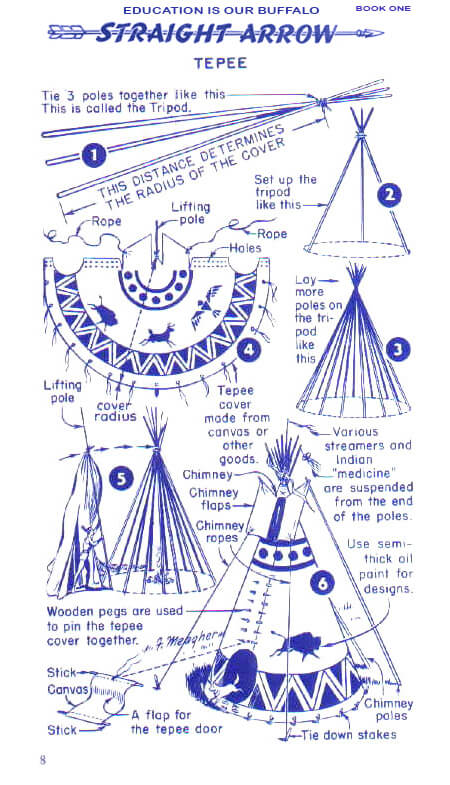
Indian Tepee:
Let’s start with housing; in the uity cards of a straight Arrow, the technique to build a house that is called Indian Tepee.
(In this card picture, you can have a look at Tepee making techniques). Morris Opler, an anthropologist, recorded the following description of Chiricahua wickiups:
The family’s home is usually an oval, dome-shaped brush dwelling with the floor at ground level built by the women. It stands seven feet tall in the middle and has an eight-foot circumference. Long fresh oak or willow poles are pushed into the ground or put in holes dug with a digging stick to build it. The structure is made up of these poles, spaced one foot apart and tied together at the top with yucca-leaf strands. Bundles of large bluestem grass or bear grass are tied shingle-style over them with yucca strings. Above a central fireplace, a smoke hole appears. At the door, a hide is supported from a cross-beam and can be swung forward or backward. Any route is possible for the doorway. Pieces of the hide are thrown over the outer hatching for waterproofing, and the smoke hole is covered in rainy weather if a fire is not needed. Much of the outer roofing is stripped off in hot, dry weather. A robust dwelling of this kind takes about three days to build. Even if there is a lot of snow, these houses are “hot and comfortable.” Brush and grass beds line the interior, which is draped with robes.

